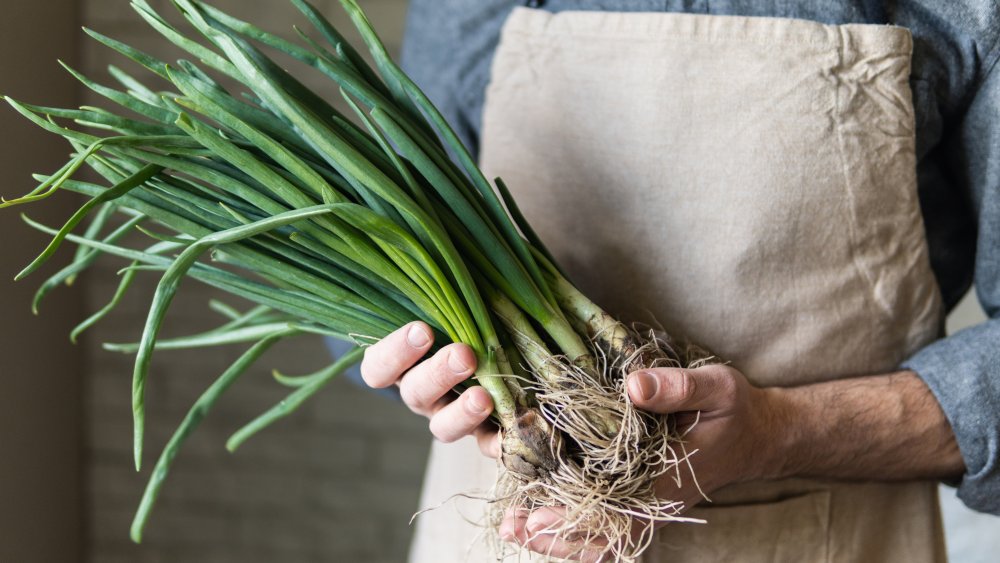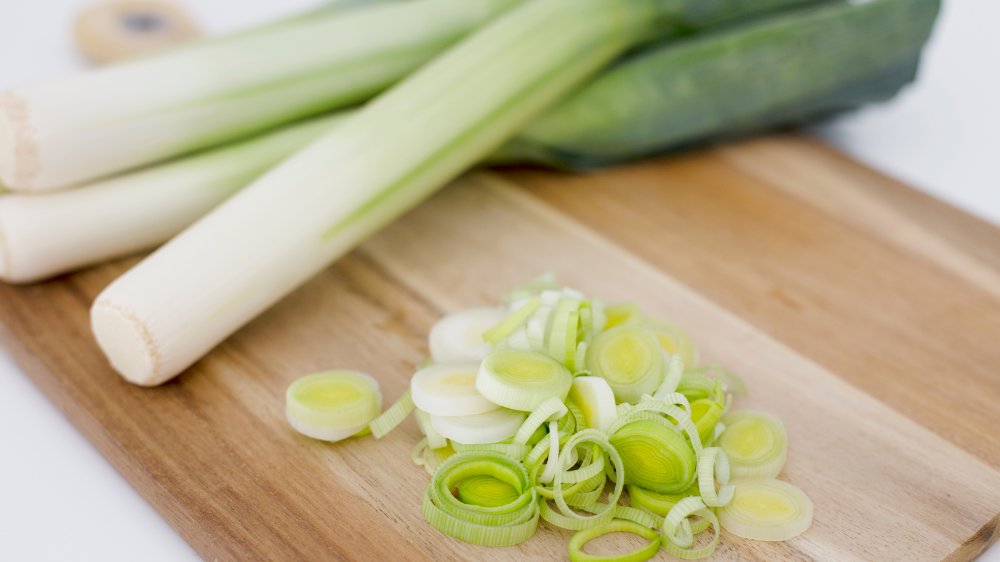The Real Difference Between Leeks And Scallions
We've all heard the saying, "you've gotta eat your greens," when referring to vegetables. But sometimes it is hard to do so when you don't know the difference between them or what they would even taste like. Although scallions can be found within many dishes, not many dishes or recipes call for leeks. Even though they might be ordinary, though confusing, vegetables, leeks and scallions happen to be cousins.
According to Devour, both of them belong to the same plant family as onions, shallots, and garlic — the Allium genus. Despite belonging to the same family, leeks and scallions have more differences than they do similarities. Leeks and scallions differ in appearance, taste, and even in how to cook them, making them two items that aren't interchangeable, the way onions and shallots are — despite some differences, both have an oniony taste. Even with their difference in appearance, some people don't know the difference between the two vegetables and even wonder if there really is a difference at all.
How do leeks and scallions differ?
For starters, leeks are harvested at a much larger size than scallions. At full maturity, leek stems can be about one to two inches in diameter and their stalks can be about 12 to 18 inches tall, according to Harvest To Table. The Spruce states that in comparison, scallions are harvested at much thinner width, and when the stalk is about 12 inches or less (they can grow up to three feet in height).
In terms of taste profile, scallions wear the crown for strength and punchiness. Spoon University states that scallions have a sharper taste that is likened to pepper and spice. Leeks, on the other hand, have a taste that feels more oniony, but tastes more garlicky when cooked.
There's also a big difference in how each vegetable should be cooked. According to a user on a Chowhound forum, leeks are the perfect veggie for things like braising, sautéing, and baking. Scallions are best when they are grilled, added to a stir-fry, or in salads (via Spoon University and Chowhound). Another difference between the two? Scallions are in peak season during the summer, while leeks are in peak season during October (via Bon Appetit and Just A Taste).

